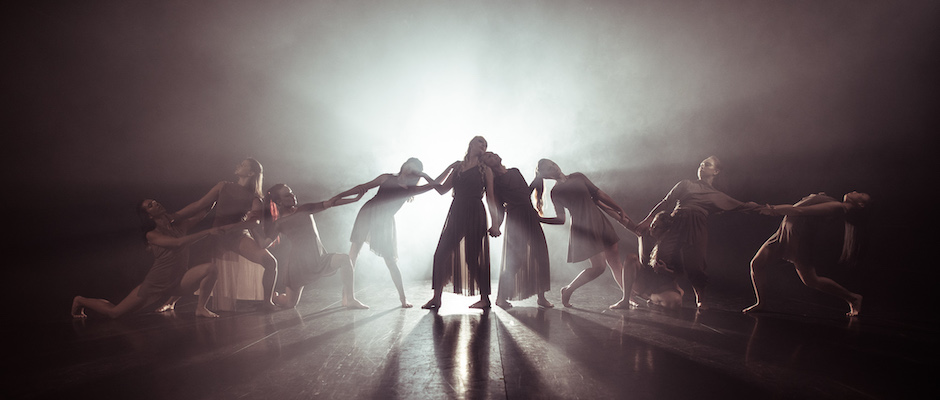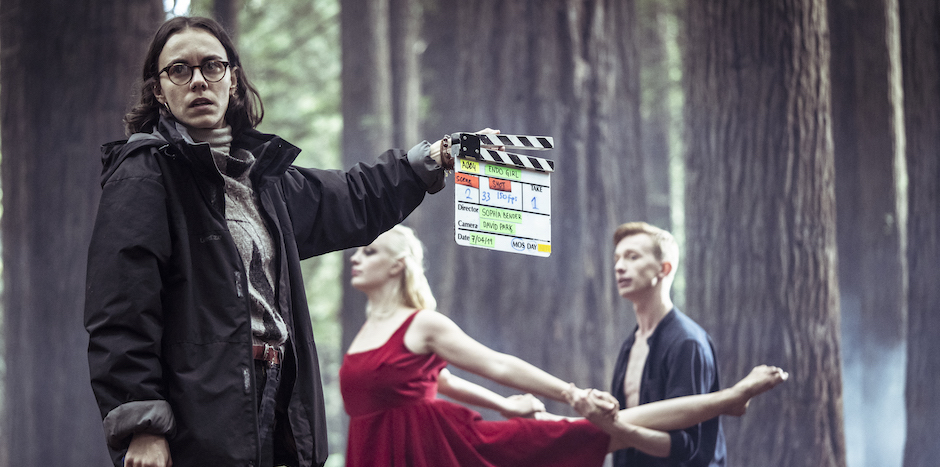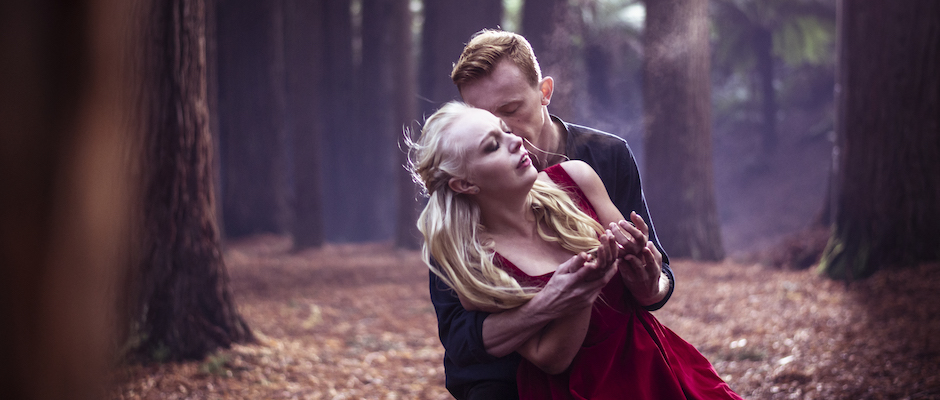
When I first watched Endo Girl, a short documentary dance film, I felt like I was watching my own story reflected on the screen. Directed and produced by Australian filmmaker Sophia Bender, Endo Girl aims to raise awareness about endometriosis and help people know they are not alone in their struggle. The film unfurls through the stories of thirteen people who suffer from the disease. Their powerful words of pain and struggle are superimposed with metaphorical dance sequences that show the audience what an individual’s journey to diagnosis is like, as well as the effect the disease has on their day-to-day lives. I can relate to a lot of the things the contributors in the film discuss losing as a result of this chronic disease. Endo has impacted my marriage, my body image, and my ability to work. It has had a huge and detrimental effect on my life since the age of twelve.
I remember bleeding through my pants in elementary school. I remember stuffing hot water bottles under my coat on the bus on my way to university. I remember the first time I had to buy clothes in the maternity section because my regular jeans no longer fit my bloated body. I remember being scared that this aggressive disease would haunt me for the rest of my life.
In Bender’s personal journey with the disease, she’s anxious about her future and her ability to have children. Finally getting a diagnosis is only one part of the endo journey, and it’s a lot to process, even if you now have a name for the pain that’s gone unacknowledged for so long.
“It’s a lot to take on board, especially knowing there is no easy answer and how unpredictable the disease is,” she says. “And, of course, there is no cure. But my story is just the same as the other one in nine people worldwide. That’s on average 200 million people.”
The numbers are staggering, as is the fact that it takes on average 7-12 years to diagnose endometriosis—which can only be done through an invasive laparoscopy surgery. Feeling completely helpless about her situation, three years ago Bender decided it was time to do something about it and advocate for the disease.
“I have the power to make a difference by using my voice through the medium of film. I don’t want us to suffer in silence anymore. I also don’t want to feel guilt and shame about something that is out of my control. Most importantly, I wanted to start a conversation. This is how Endo Girl began. While endometriosis has taken so much from my life, this film has given me more back than I could have ever imagined.”
Bender began the process of writing the script in 2018. She says she spent a lot of time doing research on endometriosis and posting in online support groups. “I felt such a huge responsibility telling a story on behalf of so many warriors, and it was so important to me to get it right. This was also a fabulous starting point to think about how I was also going to bring their stories to life through dance.”

Filming began in 2019. Bender started with the contributors’ interviews, as she believed they were the driving force of the entire production. Once she had filmed the 13 warriors, as well as herself, she started editing the interviews together so they could take them into rehearsals and choreograph the movement alongside their stories.
“For me, it was an easy decision to be interviewed for the film because I wanted to stand alongside the other people and feel like we were all in this together. Deciding to dance in the film was much harder. I had been out of full-time ballet for five years, so I began a rigorous training routine to get back into shape. At times this took a toll on my endo. I also had to strategically plan when I was going to have my periods and go off the pill so that the filming would be exactly in that sweet spot when my pain was minimal.”
Bender’s striking red dress was designed by her housemate at the time, Hannah Burk, and they deliberately decided to make the dress loose and flowing so that if Bender happened to have endo belly on the day of shooting, her bloating would be hidden.

Bender says finding the contributors who spoke on camera was the most critical part of the process because of the varied symptoms warriors experience. “I wanted to make sure I ticked all the boxes. I specifically wanted a 12-year-old girl followed by ages that varied to people in their 50s. I wanted to represent on screen those who were just starting their journey alongside people who had suffered their entire life.”
The most dramatic and shocking testimony for me comes from a beautiful 12-year-old warrior. To see her speak about the ramifications of endometriosis so early in her life is heartbreaking.
During filming, Bender asked people to first share their story in any way they liked. She then had set questions that she asked everyone, such as “How many surgeries have you had?” She also had a few set lines she had written in the script that she had all the warriors repeat in unison. “We must put an end to this insidious disease” is one example, and it hit me hard.
“I knew from the beginning that Endo Girl was going to be a dance film, but I didn’t think I realized its importance until after we filmed the interviews,” Bender says. “Being a warrior myself, I thought I knew how bad the disease could be, but I felt this overwhelming sense of gratitude about how brave and vulnerable these people were.”
I especially related to the scene where Bender is in the forest with the male dancer, Tomas Parrish, who co-choreographed the relationship scene and is also the composer of the musical score. Bender and Parrish expertly and emotionally act out the push-pull of an intense bond stressed by chronic pain. It was very healing and moving for me to watch them go from jumps of joy and twirls of happiness, totally in love, to turning their bodies away in anger and frustration as Bender clutched her belly in agony. There is one moment in the choreography where Parrish is about to place a hand on her shoulder in a gesture of comfort, but doesn’t, and that sent an arrow straight to my heart. It’s as if his touch might heal this huge gap between them, but she never gets to experience it, and is left alone lying on the forest floor.

When I ask Bender if that particular scene was difficult to film, she confirms that she drew on her own personal experience. “I was twenty-two at the time and very inexperienced. When we began our intimate journey, the signs of my endo started to surface, and there was so much guilt and shame that I experienced associated with these symptoms. Unfortunately, the relationship didn’t last, and it took me years of grief to come to terms with it ending. I always think of film as my form of therapy.”
When I point out to Bender that Australia seems to be a world leader in the endo awareness community in recent years, I ask if Emma Watkins, who is an Australian singer, actress, and dancer (best known as the first female member of the children's group the Wiggles), helped kick it off when she went public with her struggle.
Bender agrees. “When Emma Wiggle shared her story with endometriosis, it was so incredible and inspiring to see. Endometriosis Australia also does an incredible job for raising awareness and funding. They have been running since 2013, and have so many events and ways to get involved within the community. We also have so many fabulous Ambassadors and Endo Champs who also use their voices to raise awareness.”
What surprised her most about making this film?
“The response. It's been so overwhelming and exciting to see how many people are coming forward and speaking up since watching the film. During the Q & A session at the premiere, we had a number of people who felt empowered enough to share their stories through sobbing tears in a room of 150 people. For me, this was not only overwhelming, but incredibly validating that the impact of the film had on these people had made them feel brave enough to do this. It meant we had achieved what the film had set out to do.”
In terms of what stage Bender is at in her own endometriosis journey, she replies that she’s currently managing her symptoms with the birth control pill and skipping as many periods as she can.
“Fortunately, this has worked for me. My fatigue has taken years to get under control, however, and has been one of my worst symptoms. I tend to push myself past my limit, and then it takes me months to recover. This happened after I finished Endo Girl.”
At the end of the film, Bender highlights the 9 to Shine for Endometriosis campaign. “We have chosen the number nine for the one in nine people that suffer with endometriosis. We are aiming to raise $9 million dollars in 99 days through $9 donations. The statistics in Australia have recently changed from endo affecting one in ten people to one in nine. The campaign is going well. We are currently getting people behind it, which is exciting. We would love to see more people sharing it and getting involved in order to reach our goal.”
Bender says that the best thing about having endo is that it has given her a voice. “Through all the pain and suffering, I feel this responsibility inside me to do something about it. I want to continue to raise awareness and show warriors that they are not alone. This gives me purpose and encourages me to keep fighting. I want it to be different for the next generation. I look forward to a day when everyone knows what endometriosis is.”
The film is now available online worldwide, and you can watch it here.









